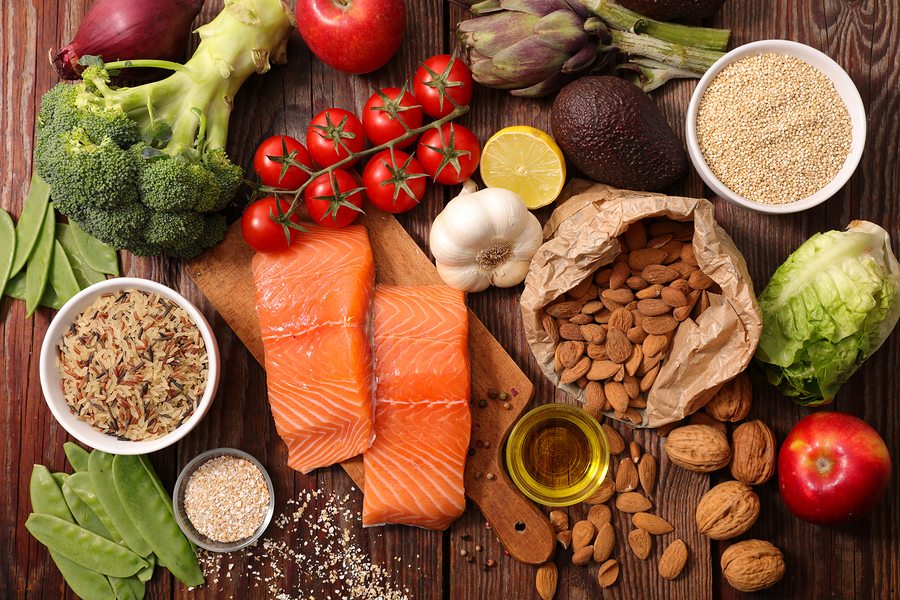
It is crucial to eat cooling and healthy foods during the summer months. In the summer heat, the digestive system is more sensitive so avoid eating hot foods. For snacks and meals, choose healthy ingredients. Consider the season and ingredients, as well your personal preferences. These are the top foods to enjoy in summer. Here are some options for a healthy diet.
Vegetables and fruits. People prefer to eat summer salads and fruits. They can also be very unhealthy and high in calories as well as sugar. Summer is a good time to eat many different fruits and vegetables, including mangoes and grapes. These delicious fruits make excellent breakfast smoothies. These healthy choices can be a great addition to your daily meal plan.
Melons. Muskmelons are a great way of increasing your energy levels. For those who feel tired in hot weather, this is especially helpful. They are full of vitamins and mineral, which will keep the body healthy and active all day. You can even feed your baby with muskmelons, which are easy to digest and are good for their gut. And if you're worried about the sugar content in these foods, you can always mash them and mix them into a juice or chunk.

Apples. They contain a lot of water, so they're great in the summer months. These fruits are high in pectin, which helps maintain a healthy digestive system. This fruit is rich in antioxidants that will keep you healthy. It provides energy and good nutrition. These fruits are also rich in Vitamin A. and C. They're excellent for fighting dehydration-related illnesses. Make sure you include healthy summer foods in your diet.
Tomatoes go well with any meal. Because they can be found in almost any season, tomatoes make a great option for lunch or dinner. Tomatoes are rich in antioxidants and vitamins that can protect the body against the damaging effects of UV rays. It means that you can enjoy delicious meals without worrying about any harmful effects. They are good for your skin too.
Berries are another excellent choice for summer. They're high in fibre, which is essential for healthy digestion. A cup of berries can also improve your skin's texture. It is also rich in antioxidants which can protect your body from serious diseases. Some berries are more beneficial than others. Avoid eating any food that you have an allergy to. Berry's vitamins and minerals can help you maintain your healthy weight.
Yogurt is another great choice for babies. It's rich in calcium, protein, and vitamin D which are vital for a healthy gut. Your baby will also benefit from yogurt's protein content, which is crucial for their development. It is easy to digest and can be given to babies as young as six months. You can make your own curd, if you're unsure about how yogurt should be introduced to your baby. A simple, homemade yogurt is a good choice if you don't know what type of yogurt you should introduce to your child.

Watermelon is a great summer food, and it's not just fruit. It is a good source of lycopene. This is important for heart health. It is also good for your overall health. To maximize the benefits, grill the melon and drizzle olive oil on it. A savory option is to roast or grill the watermelon. This fruit does not need additional sugar and is also a great choice for snacks in the summer.
The summer's best food choices are those that are both watery but also rich in nutrients. Green beans, for example are a good snack. They are 95% pure water and can also be given to infants as finger food. Boiling cucumbers can be a tasty snack if you don't find the right snack. You can still enjoy delicious meals and stay hydrated during the summer heat as long as you don’t go overboard.
FAQ
What is the problem of BMI?
BMI stands For Body Mass Index. This refers to the measurement of body fat using height and weight. BMI is calculated using the following formula:
The weight of a kilogram divided by its squared height in meters.
The score is expressed as a number between 0 and 25. Scores of 18.5 and higher indicate overweight, while scores of 23 and higher indicate obesity.
A person who weighs 100 kg and has a height of 1.75 m will have a BMI of 22.
What does it take to make an antibiotic work?
Antibiotics kill harmful bacteria. The treatment of bacterial infections is done with antibiotics. There are many kinds of antibiotics. Some can be taken orally while others are injected. Others are topically applied.
Many people who have been exposed can be prescribed antibiotics. One example is if someone has had chickenpox and wants to prevent shingles. A penicillin injection might be given to prevent pneumonia in someone who has had strep.
Children should not be given antibiotics without the consent of a doctor. Children are at greater risk of developing side effects from antibiotics than adults.
Diarrhea is one of the most common side effects of antibiotics. Side effects of antibiotics include diarrhea, stomach cramps and nausea. These symptoms generally disappear once the treatment has finished.
Do I have to count calories?
It is possible to wonder "What diet is best for me?" or "is counting calories necessary?" This depends on your health and lifestyle.
The Best Diet For Me - Which One Is Right For You?
My current health, my personal goals and lifestyle will determine the best diet for me. There are many options, both good and bad. Some are better for certain people than others. What should I do? How can I make the best decision?
These questions are addressed in this article. It begins by briefly describing the various diets available today. Then we will discuss the pros & cons of each kind of diet. Finally, we'll discuss which one is best.
Let's begin by briefly reviewing the different types and diets.
Diet Types
There are three main types. Low fat, high proteins, and ketogenic. Let's talk about them briefly.
Low Fat Diets
A low-fat diet restricts fat intake. This is achieved by reducing saturated fats like butter, cream cheese, and other dairy products. It is possible to replace these saturated fats with unsaturated ones (olive oil or avocados). Low fat diets are often recommended to those who wish to lose weight quickly. However, this kind of diet may cause problems such as constipation, heartburn, and indigestion. If a person doesn’t receive enough vitamins from their foods, this can lead to vitamin deficiency.
High Protein Diets
High protein diets are known to restrict carbohydrate intake and promote the consumption of proteins. These diets often have higher levels of protein than most other diets. They are meant to help build muscle mass and burn more calories. The downside is that they may not provide adequate nutrition for someone who needs to eat regularly. They may also be too restrictive and not suitable for everyone.
Ketogenic Diets
Also known as keto diets, ketogenic diets are also called keto diets. They are high on fat but low in carbs and proteins. These foods are popular among athletes and bodybuilders as they allow them to train harder, longer and without becoming tired. But, they require strict adherence to avoid negative side effects like nausea, headaches, and fatigue.
Statistics
- WHO recommends reducing saturated fats to less than 10% of total energy intake; reducing trans-fats to less than 1% of total energy intake; and replacing both saturated fats and trans-fats to unsaturated fats. (who.int)
- nutrients.[17]X Research sourceWhole grains to try include: 100% whole wheat pasta and bread, brown rice, whole grain oats, farro, millet, quinoa, and barley. (wikihow.com)
- The Dietary Guidelines for Americans recommend keeping added sugar intake below 10% of your daily calorie intake, while the World Health Organization recommends slashing added sugars to 5% or less of your daily calories for optimal health (59Trusted (healthline.com)
- WHO recommends consuming less than 5% of total energy intake for additional health benefits. (who.int)
External Links
How To
What does "vitamin" actually mean?
Vitamins are organic compounds naturally found in food. Vitamins allow us to absorb nutrients from food. Vitamins cannot come from the body so food must provide them.
There are two types if vitamins: water soluble, and fat soluble. Water-soluble vitamins dissolve easily when they are dissolved in water. Vitamin C,B1(thiamine), B2 (2riboflavin), and B3 (3niacin), as well as vitamin C,B1, B2 (riboflavin), and B3 (niacin), vitamin B6 (pyridoxine), vitamin folic acid (biotin), pantothenic, and choline are examples. Fat-soluble vitamins are stored in the liver, fatty tissue and kidneys. You can find vitamin D, E K, A, beta carotene, and other fat-soluble vitamins.
Vitamins are classified according their biological activity. There are eight major vitamin groups:
-
A – Essential for normal growth, and the maintenance of good health.
-
C – essential for proper nerve function.
-
D - Essential for healthy teeth and bones.
-
E - needed for good vision and reproduction.
-
K - Essential for healthy muscles and nerves.
-
P - essential for strong bones, teeth and tendons
-
Q - aids digestion, absorption and absorption iron
-
R is required for the production of red blood cells.
The recommended daily allowance (RDA) of vitamins varies depending on age, gender, and physical condition. The U.S. Food and Drug Administration (FDA) sets the RDA values.
For adults over 19, the RDA for vitaminA is 400 micrograms per daily. However, pregnant women need 600 micrograms per day because it is important for fetal development. Children ages 1-8 require 900 micrograms per day. Infants under one year of age require 700 micrograms per day, but this amount decreases to 500 micrograms per day between 9 months and 12 months of age.
Children between the ages 1--18 years old who are overweight or obese require 800 micrograms per Day, while those who are overweight or obese need 1000 micrograms. To meet their nutritional needs, children underweight and obese require 1200 micrograms a day.
Children aged 4-8 years old who have been diagnosed as having anemia require 2200 micrograms of vitamin C per day.
2000 micrograms daily is required for adults over 50 to maintain their general health. Mothers who are pregnant, nursing, or have a high nutrient need will require 3000 micrograms a day.
Adults over 70 need 1500 micrograms daily, as they lose 10% of their muscle every ten years.
Women who are pregnant, nursing or breastfeeding need more than the RDA. Pregnant women need 4000 micrograms per dayduring pregnancy and 2500 micrograms per day after delivery. Breastfeeding mothers need 5000 micrograms per day when breast milk is being produced.